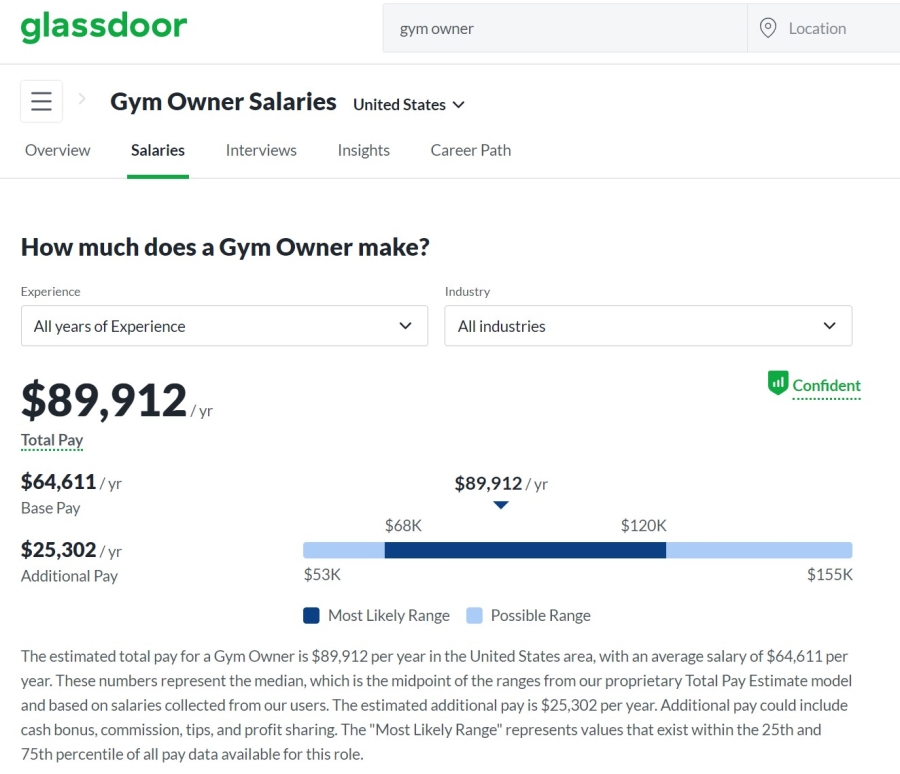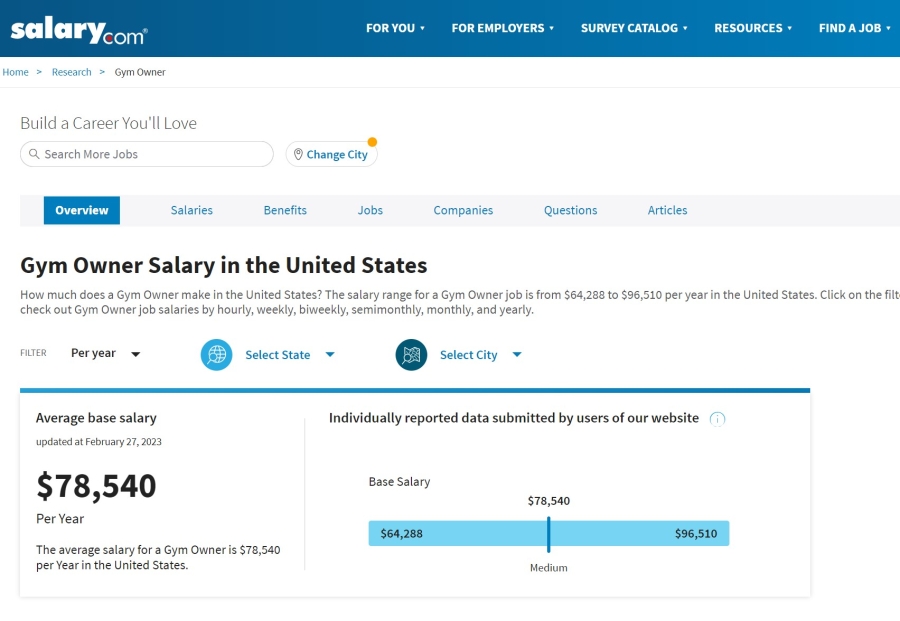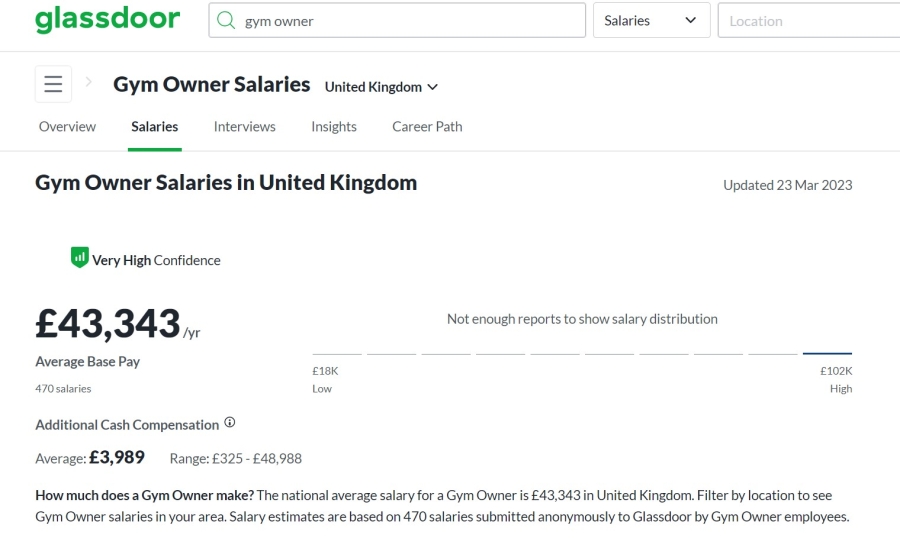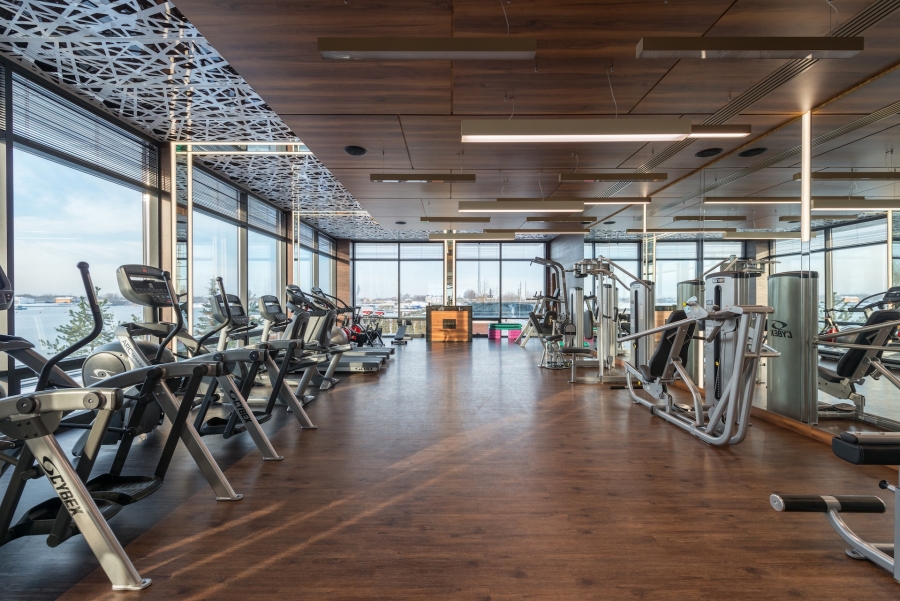Let’s take a deep dive into the world of gym ownership and explore the potential for financial success. From traditional fitness centres to trendy CrossFit gyms and everything in between, we'll break down how much money gym owners are making and how you can achieve similar success.
How Much Money Does a Gym Owner Make? It Depends!
The fitness industry is heavily influenced by the local economy, culture, and demographics. Therefore, a one-size-fits-all amount of money cannot be given, as gym owners in different countries face unique challenges and opportunities that impact their income.
This is influenced by many factors such as the size and location of the gym, the number of members, competition in the area, the gym's pricing strategy, facilities, and equipment. To determine your potential income as a gym owner, you also need to consider taxes, rent, labour costs, and regulations that differ from country to country.
For example, in countries with higher living costs like the Netherlands or Norway, gym owners may have to charge higher membership fees to cover their expenses. Meanwhile, in countries like Poland or Italy, may face greater competition from smaller, low-cost gyms.
It is also significant that the fitness industry all over the world is constantly evolving, with new trends and innovations emerging every year. This in turn leads to increased competition, which has made it increasingly challenging for gym owners to generate profits. Despite the vast potential of this business, a staggering 81% of them fail within the first year!
Average Gym Owner Income
There is no fixed average salary for gym owners, as it largely depends on their business growth rate and incurred expenses. The truth is that initially, they tend to incur losses until they start turning a profit. This is a common reality for most fitness entrepreneurs, particularly those opening their first gym location.
However, there are some available statistics about the different wage brackets in the US and UK. Let’s look at what the numbers say!
How Much Do Gym Owners Make in the US?
The average gym owner's salary in the US is $89,916 according to Glassdoor as of March 2023 (total pay). This figure includes a base pay of $64,615 per year and an additional pay of $25,301 per year.
Interestingly, the salary range for gym owners is quite wide, with a minimum of $34,000 and a maximum of $384,000, as reported by Glassdoor.
Alternatively, Salary.com provides slightly lower total pay for gym owners, which is $78,540 (updated on February 27, 2023).
Bear in mind that salary aggregate sites calculate their estimates based on anonymous submissions from individuals using their sites. This means they shouldn't be treated as an infallible sources of information.
Franchise Gym Owner's Salary
Given how competitive the fitness industry is, opening a successful gym is brutally hard. A common strategy is to open a franchise – a business operating on the franchisor's company model.
The benefit is that it's basically a turnkey operation, with branding, rules, guidelines, business plans, strategic alliances, and policies already in place. This mitigates some risks for new gym owners.
However, start-up costs and royalties cancan affect annual revenue and take-home pay. According to a survey by Franchise Business Review, “the majority of franchise owners earn less than $50,000 per year.”
How Much Do Gym Owners Make in the UK?
According to Glassdoor, the national average salary for a Gym Owner is £43,495 in the United Kingdom.
On the other hand, based on a study conducted by Salaryexplorer, the average annual salary of a gym owner in the UK is approximately £113,000, equivalent to around £9,415 per month. However, this figure can vary significantly, with salaries ranging from as high as £180,000 to as low as £52,000 per year, depending on the location.
How Much Do Gym Owners Earn: Profit vs. Your Own Salary
While industry benchmarks can be used to determine whether you're matching the profit margins of others in the same role, the ranges they tend to give you are extremely wide. That's because the question “how much do gym owners make?” is a tough one to answer.
As a gym owner, your earnings are fully dependent on your profit, and you're only able to pocket the money when your revenues exceed your expenses.
What Influence Gym Owners' Salaries? 6 Key Factors
The salary of a gym owner is not fixed and is determined by various factors that influence the gym's revenue.
Let's now look at the list of the most common aspects that greatly influence gym owners' salaries.
-
Location
Location is one of the most crucial factors that can impact a gym owner's salary. Why is that?
The success of a gym largely depends on its accessibility and visibility to potential customers. For instance, gyms located in densely populated urban areas with high foot traffic and easy accessibility through public transport tend to attract more members, resulting in higher revenues and profits than ones located in a rural or suburban area.
Additionally, the cost of operating a gym can vary greatly based on location, with expenses such as rent, utilities, and equipment costs being higher in certain areas.
-
Gym Size
Does the size of a gym affect how much gym owners earn? In some way, yes.
The size of your gym directly impacts the number of gym members you can have, your average revenue, and the overhead costs of your facility. These include rent, insurance, administrative costs, etc.
It's not necessarily true that the bigger the facility, the higher the profit. Unused, wasted spaces don't add revenue but still require to be cleaned, maintained, and heated in the colder months, which obviously costs money.
Additionally, as a result of the pandemic, some gym-goers will consciously choose a smaller but well-organized facility due to health and safety concerns.
This trend is exemplified by companies like Solo 60 in the UK, which offers exclusive rental of gym space for 60 minutes to individuals or groups seeking privacy and a more hygienic environment. While such high-end services come at a premium, many customers are willing to pay extra for these added benefits.
-
The cost of membership is a crucial factor that directly affects a gym's revenue. It's important to note that it varies depending on the type of activity and the amenities provided by the gym. For instance, high-end gyms may offer luxury amenities like saunas, spas, and personal trainers, which can justify a higher membership fee. In contrast, more budget-friendly gyms may provide basic equipment and facilities, but at a lower cost to the members.
According to RunRepeat, the average gym membership cost in the US is around $37.71 (ranging from $31.00 with lower-tier memberships to $44.42 on higher-tier). However, speciality gyms such as CrossFit can cost their members even $200 per month. Yoga studios, on the other hand, typically charge around $150 per month, as they require little to no equipment and have lower maintenance costs.
Ultimately, the membership cost is a balancing act for gym owners – they must set a price that is competitive in the market, while also covering their operating expenses and making a profit.
-
Facility Type
The type of facility (Traditional Gym, CrossFit Gym, Yoga Studio, etc.) is an important factor influencing how much money you can make. As mentioned above, the monthly membership fee can vary depending on the fitness activity, but that's not the only thing to consider.
The capacity of the studio plays a big role in determining the potential customer base. Additionally, member behaviours and expectations can differ based on the type of activity. For example, a yoga studio may not have a vending machine full of protein bars and bottled shakes as you would typically find in a regular gym. Therefore, understanding the specific needs and expectations of members in different types of facilities is crucial for maximizing profits.
-
How Long You've Been a Gym Owner
The survival of your gym is the hardest in its infancy. Naturally, the initial investment is the highest in the first year of operation and as a consequence, you can expect larger profits (and pay cheques) in your second and following years. However, for new business owners, finding the right growth formula can be challenging.
Customer Acquisition Cost (CAC) tends to be high for new business owners, as they need to spend money on creating awareness before they can compete with other businesses. This is why well-established gyms find it easier to bring higher annual profits, as they can lower their CAC and maximize Lifetime Value (LTV).
Additionally, an older gym may have a more loyal customer base, which can result in higher retention rates and word-of-mouth referrals. Therefore, the age of a gym is a crucial factor in determining a gym owner's profits.
- Additional Revenue Streams
Diversifying revenue streams is one of the most powerful factors affecting how much you can make as a fitness business owner. In addition to the traditional gym memberships, there are several other opportunities for generating revenue. You can think of organizing events (i.e. charity runs), selling supplement and other fitness-related products or offering amenities like saunas.
Which Skills Can Increase Gym Owners’ Salaries?
Transitioning from trainer or gym member to the owner of a successful gym is tough and requires a unique set of skills. The harsh truth is that in addition to being knowledgeable in fitness, you also need to be confident in managing the business side of things.
Developing certain skills can significantly increase your salary as a gym owner. Here are the examples of some you should work on:
- Finances: Having a solid understanding of finance is essential. This includes budgeting, taxes, cash flow management, and payroll.
- Human Resources: You have to know how to recruit, train, and manage staff effectively.
- Sales and Customer Success: If you want your business to grow, you will need to learn how to build your membership base through cross-selling, up-selling, retention strategies, and customer journey efforts.
- Marketing: This is vital for reaching new audiences with relevant messages and creating smart campaigns.
- Operations: Having strong operational skills is crucial for ensuring facility maintenance and the day-to-day operations run smoothly.
By developing these skills, gym owners can increase their salaries and take their businesses to new heights.
Gym Owner Salary Seasonality
Much like the gym locker space availability, a gym owner's salary isn't the same throughout the year.
The fitness industry is highly cyclical, and the first quarter of the year typically comes with higher profit margins due to New Year's resolution. Most gyms and fitness centres tend to experience an influx of new members in the first quarter (especially January) resulting in more revenue generated.
Unfortunately, as exercising regularly requires discipline, most newcomers gradually drop off as their enthusiasm wanes. To improve member engagement and retention, gym owners can implement various strategies.
While seasonality can mean more revenue in the first part of the year, it's important to reinvest most of that money back into the gym rather than translate it into salary.
Conclusion
Becoming a gym owner is a dream for many, and you need to put in a lot of time, attention, and energy to make a profit. Owning a studio doesn't come with a fixed salary, but if you can crack the code and give people exactly what they want in your location, it's really worth it.
To quote Peter Drucker, “you can't manage what you can't measure”. Therefore, leveraging tools like advanced analytics can help you make data-driven decisions to enhance your gym's performance. If you're looking for a platform that can help you manage your gym effectively and track key metrics, we recommend trying out PerfectGym. If you're interested in growing your club with advanced analytics, definitely give a go.










